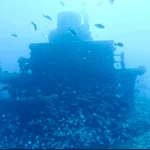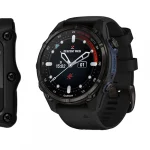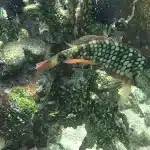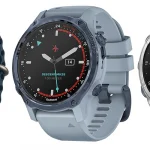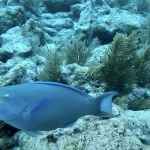Welcome to Key Largo: The Ultimate Dive Destination for Beginners
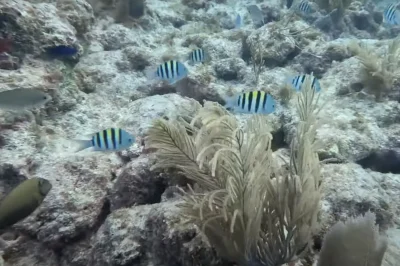
Table of Contents
- Welcome to Key Largo: The Ultimate Dive Destination for Beginners
- Exploring the Wonders of Molasses Reef: A Novice’s Underwater Playground
- Navigating John Pennekamp Coral Reef State Park: What New Divers Must Know
- Why Visibility Matters: Experiencing Florida’s Crystal Clear Waters
- Key Largo’s Marine Life: Meeting Your First Sea Turtle
- Understanding Dive Safety: Mastering the Basics in a Controlled Environment
- Historical Shipwrecks: Safe Adventures for New Divers
- Gearing Up for Success: Essential Equipment for New Divers
Introduction
Key Largo, Florida, stands as one of the foremost destinations for new scuba divers. With its clear waters, rich marine life, and a variety of dive sites suitable for beginners, it’s the perfect training ground. This blog post will guide you through the best dive sites and tips tailored for those new to scuba diving, ensuring your visit is both enjoyable and educational.
Welcome to Key Largo: The Ultimate Dive Destination for Beginners
Molasses Reef in Key Largo, Florida, is a beginner-friendly dive destination offering clear waters, manageable depths, and diverse marine life. Here’s a structured guide for newcomers:
Dive Specifications
Depth Range: 15–30 feet (4.5–9 meters), with most sites staying above 25 feet, ideal for first-time divers.
- Currents: Generally light but may require occasional navigation; coral formations provide natural shelter from stronger flows.
- Marine Life: Fish species dominate, with occasional sea turtles and Goliath Groupers (e.g., at Fire Coral Cave). Note: Coral health varies, with some areas showing dead or minimal living coral.
Key Sites for Beginners
- Fire Coral Cave: A swim-through with depths up to 30 feet, accessible for guided dives.
- French Twist: Shallow swim-throughs (15–30 feet) in a protected area.
- French Reef: Includes Hardbottom Cave (20–35 feet), suitable for those with basic experience.
Preparation & Safety Tips
- Health Requirements: Avoid diving with ear infections, sinus issues, or chest congestion. Prioritise basic stamina exercises to handle mild currents.
- Training & Guidance: Dives typically last 40–60 minutes. Stick to guided tours with operators like Rainbow Reef Dive Centre for structured supervision.
- Gear & Logistics: Rent equipment from reputable centres like Scuba-Fun or Sea Dwellers. Prioritise operators offering certifications and refresher courses.
Pro Tips for Success
- Calm Breathing: Focus on steady breathing to manage anxiety. Safety stops are often unnecessary at shallow depths.
- Current Awareness: Check conditions pre-dive. If currents exceed your comfort, opt for more sheltered sites.
- Sustainability: Follow reef-safe practices (e.g., not touching coral, minimising sunscreen chemicals).
Molasses Reef balances accessibility with diverse underwater experiences, making it a top choice for new divers to build confidence and skills.
Exploring the Wonders of Molasses Reef: A Novice’s Underwater Playground
Common Beginner Mistakes at John Pennekamp Coral Reef State Park
Diving at John Pennekamp Coral Reef State Park can be an unforgettable experience for new divers, but several common pitfalls could undermine the enjoyment and safety of their adventures. Understanding and avoiding these mistakes is crucial for a successful dive.
- Neglecting Guided Boat Tours: Many novices assume the park’s beach area provides adequate diving opportunities, but the best reef and wreck experiences (e.g., the USS Spiegel Grove) require boat access. Skipping guided trips limits exposure to prime sites, leading to missed opportunities for vibrant marine life and safe diving conditions.
- Overestimating Beach Snorkelling: While the park has a shallow snorkelling area with a mock shipwreck, it pales compared to offshore reefs. Beginners often overstay on the beach, missing the deeper, diverse marine ecosystems that are accessible only via boat.
- Ignoring Depth and Air Monitoring: Fascination with underwater sights can lead to neglecting gauge checks, risking rapid depth descents or low air reserves—a critical error given Florida’s variable currents.
- Misreading Hand Signals: Common misinterpretations include mistaking a “thumbs up” (indicating ascent) for universal approval. Inconsistent communication with a buddy increases confusion and can lead to dangerous situations.
- Underestimating Weather and Currents: Failing to reschedule during unstable conditions (e.g., strong currents, limited visibility) heightens risk, particularly near deeper wrecks like the Spiegel Grove, which requires advanced buoyancy skills.
- Attempting Advanced Dives Early: The Spiegel Grove wreck, sitting at 130 feet, is challenging even for experienced divers due to depth and structural complexity. Beginners should avoid it without proper training and guidance.
- Relying Solely on Instructors: While instructors provide oversight, novices must prioritise self-awareness (e.g., monitoring depth, staying within safe zones). Over-reliance on guides increases vulnerability to accidents.
Navigating John Pennekamp Coral Reef State Park: What New Divers Must Know
Key Largo’s dive environments vary significantly in visibility, influenced by depth, water flow, and weather patterns. Here’s a breakdown of typical conditions across dive site types:
Coral Reefs
Visibility: Typically 70–100 feet in optimal conditions, with shallow reefs (25–40 feet) benefiting from ambient light.
- Notable Sites: Molasses Reef (e.g., Hole in the Wall, The Winch) and John Pennekamp Coral Reef State Park.
- Key Advantage: Warm, clear water ideal for training and photography.
Wreck Dives
- Deep Wrecks (75–140 feet)
- Visibility: Excellent, despite strong currents, due to open-water clarity.
- Notable Sites:
- USCGC Duane (120 feet, upright): Schools of snapper, barracuda, and bull sharks.
- Spiegel Grove (140 feet, intentional sink): Advanced dives with complex structure.
- Conditions: Current-driven marine life abundance.
- Shallow Wrecks (25–45 feet)
- Visibility: Variable, depending on weather.
- Notable Sites:
- Benwood (1942 collision wreck): Extensive damage from hurricanes, suitable for longer dives.
Current Considerations
- Average Visibility: Some divers report 60 feet as typical, though this can fluctuate.
- Real-Time Data: Local operators like Rainbow Reef provide updated visibility reports and photos.
Why Visibility Matters: Experiencing Florida’s Crystal Clear Waters
Conservation Infrastructure Expansion
Key Largo is experiencing significant developments in marine conservation that directly impact diving experiences and biodiversity protection. One notable initiative is the upcoming Ocean Exploration Centre launched by REEF, set to open on June 7-8, 2025. This state-of-the-art facility will cover 4,000 square feet, focusing on marine education and citizen science. It will feature interactive exhibits, science classrooms, and galleries that highlight ocean history and restoration successes. This hub aims to equip new divers with essential conservation knowledge while fostering awareness and stewardship through immersive programmes.
Policy and Habitat Protection
Complementing these infrastructure enhancements, the Florida Keys National Marine Sanctuary is advancing its Restoration Blueprint, which includes evaluating boundary expansions and modifying marine zones to safeguard vital habitats such as coral reefs and seagrass. These strategic measures aim to manage conflicting human activities while supporting sustainable usage. Consequently, this could lead to altered diving access patterns, particularly in high-conservation areas where divers may find themselves in newly designated protected zones.
Active Reef Restoration
Organisations such as the Ocean Conservation Foundation are prioritising reef restoration efforts to combat declining marine populations. By encouraging citizen science initiatives and habitat restoration projects, they are creating opportunities for divers to engage actively with the marine environment. However, ongoing challenges, including disease outbreaks like sea star wasting disease and the impacts of human activity, continue to necessitate proactive management.
Trends Impacting New Divers
- Education Access: The new centre facilitates direct engagement with conservation science, promoting informed environmental practices among new divers.
- Regulatory Changes: Potential diving restrictions in expanded sanctuary zones may reshape divers’ access to specific sites.
- Healthier Ecosystems: Successful restoration efforts could lead to richer dive experiences, showcasing more vibrant coral reefs and diverse marine life encounters.
These developments reflect a growing emphasis on balancing tourism with ecological protection, aligning with global marine conservation trends that are essential for sustaining marine biodiversity.
Dive Computers
- Diving Computers for Female Divers
- Wreck Diving Computers
- Beginner Diving Computers
- Low-Light Diving Computers
- Technical Diving Computers
- Freediving Computers
- Underwater Photography Diving Computers
- Cold-Water Diving Computers
- Travel-Friendly Diving Computers
- Multi-sport Diving Computers
- Budget-Friendly Diving Computers
- Advanced Recreational Diving Computers
- Smartwatch-Compatible Diving Computers
- Child-Friendly Diving Computers
- Military or Professional Diving Computers
Key Largo’s Marine Life: Meeting Your First Sea Turtle
Safety is paramount for new divers, especially in a vibrant diving hub like Key Largo. Following structured safety protocols ensures both the enjoyment and security of every dive experience.
Preparation and Planning
As a new diver, it is crucial to remain mindful of your certification limits. Opt for shallow, calm waters that suit beginner divers, such as Key Largo’s stunning reefs and sand flats, allowing you to practice essential skills without overwhelming challenges. Conditions may vary, so understanding local tidal patterns, currents, and water temperatures is imperative. For instance, currents may be stronger near the reefs, necessitating careful entry and exit strategies. Maintaining physical fitness will further aid your ability to manage the occasional physical demands of diving.
Pre-Dive Safety Checks
Conduct a thorough safety check of your equipment before each dive:
- Mask, fins, snorkel: Ensure a proper fit and functionality.
- Buoyancy Control Device (BCD): Test for proper inflation and deflation.
- Regulator: Confirm airflow and inspect for leaks.
- Dive computer: Check depth settings and battery levels.
Always dive with a certified buddy. Discuss necessary protocols, including:
- Hand signals (e.g., “okay” sign, signals for ascent).
- Depth and time limits during the dive.
- Emergency exits and contact protocols.
Dive Safety Protocols
Effective safety practices include:
- Depth Management: Limit dives to depths of 30-40 feet (9-12 meters) to ensure decompression safety.
- Air Supply: Implement the “thirds rule,” reserving one-third of your tank air for ascent.
- Environmental Sensitivity: Avoid touching coral and marine life; maintain a safe distance of at least 6 feet (2 meters) to prevent disturbances.
Emergency Procedures
In case of emergencies, follow these steps:
- Stay calm to avoid panic, which can consume your air supply quickly.
- Signal your buddy using pre-arranged signals for assistance.
- Ascend slowly to prevent decompression sickness.
- Know local protocols for injured divers to ensure swift action.
By adhering to these recommendations, new divers can enjoy the stunning dive sites of Key Largo while ensuring their safety and the preservation of the marine environment.
Understanding Dive Safety: Mastering the Basics in a Controlled Environment
Underwater Archaeology: A Thrilling Dive into Key Largo’s Shipwrecks
For beginner divers in Key Largo, the allure of underwater archaeology is not just about swimming with colourful fish; it’s an opportunity to explore historical shipwrecks that tell stories of the past. Key Largo is home to several accessible wreck sites, making it an ideal training ground for novice divers eager to learn about marine history.
Top Shipwrecks for Beginners
Among the notable wrecks in Key Largo, the following stand out for their historical significance and suitability for new divers:
- SS Benwood
- Depth: 25-45 ft (shallowest at 25 ft)
- History: This Norwegian freighter sunk in 1942 after colliding with another vessel, later serving as a target for WWII training exercises. Today, it provides an accessible dive experience rich in marine life, including turtles and vibrant fish schools.
- Experience: Perfect for Open Water Certified divers, allowing exploration above 30 ft for those not yet comfortable at deeper levels.
- USS Spiegel Grove
- Depth: 60-130 ft
- History: Intentionally sunk in 2002, the Spiegel Grove is the largest artificial reef created in this manner. Its sunken structure continues to evolve due to environmental conditions, making dives here a dynamic experience.
- Considerations: While fascinating, currents can be strong, so this site is generally recommended for Advanced Open Water divers.
- USCG Duane
- Depth: 70-120 ft
- Highlights: This former Coast Guard cutter, sunk in 1987, is popular for spotting bull sharks. However, its depth and currents may pose challenges for beginners.
Guided Dive Operators
Diving in Key Largo is best experienced with the help of knowledgeable operators who ensure safety and provide educational opportunities for beginners:
- Horizon Divers: Offers introductory courses and guided dives suited for novice divers.
- Rainbow Reef Dive Centre: Focuses on safety and education, providing packages that combine both wreck and reef dives.
- Scuba Fun Florida: Organises daily dives to accessible sites like the SS Benwood, ensuring a comfortable experience for new divers.
Tips for Beginner Divers
- Enroll in specialty courses like the Wreck Diver course to enhance skills suitable for exploring deeper and more complex wrecks.
- Using enriched air nitrox can extend bottom time at deeper wrecks, allowing for a richer exploration experience.
- Prioritise diving on calmer days, especially at sites like SS Benwood, to enjoy a safe and enjoyable dive experience.
Historical Shipwrecks: Safe Adventures for New Divers
Gearing Up for Success: Essential Equipment for New Divers
When beginning your journey into the underwater world, having the right equipment is crucial for a safe and enjoyable diving experience. Here’s a comprehensive overview of essential dive gear tailored specifically for novice divers, emphasising comfort, functionality, and affordability.
Core Gear Essentials
1. Diving Mask
A well-fitting mask is essential for clear underwater vision and comfort. Opt for a mask that creates a good seal without feeling too tight. The Oceanic Shadow is often recommended for its comfort and efficiency in clearing water. Try on several styles to find the best fit, as this will prevent leaks and discomfort during dives.
2. Snorkel
A snorkel is vital for surface breathing. Look for a model with a purge valve to easily remove any water that enters. A dry snorkel is advantageous as it minimises water entry while diving. This feature simplifies the clearing process and enhances your comfort.
3. Fins
Your choices in fins can significantly impact your diving experience. Open-heel fins paired with dive boots offer versatility, especially in cooler waters. Alternatively, full-foot fins are better suited for warm climates but limit boot compatibility. When selecting fins, prioritise comfort and manoeuvrability over sheer power.
4. Dive Computer
A dive computer, such as the SUUNTO Zoop Novo, is invaluable for tracking depth, time, and managing safety limits. It simplifies dive planning and enhances safety by providing real-time data.
5. Wetsuit
A wetsuit provides thermal protection against cold water and potential abrasions. The thickness depends on the diving environment you’ll be in; typically, a 3mm suit suffices for tropical waters.
6. Dive Boots
These are crucial for use with open-heel fins. Ensure they fit well and provide sufficient insulation.
Additional Essentials & Accessories
- Defog Solution: Prevents mask fogging. Options include baby shampoo or commercial defogging agents.
- Dive Weights: While often available for rent, personally owning a weight belt with integrated pockets can improve buoyancy control.
- Dive Bag: A practical option, such as the Akona Azul Dive Bag, streamlines gear transport using durable, lightweight materials.
Key Considerations
- Prioritise gear fit and comfort over low prices. Poorly fitting gear may disrupt your diving experience.
- Consider renting larger items like BCDs and regulators initially, as they can be bulky and costly if you’re just starting.
- Invest in quality gear. Well-maintained and durable equipment enhances both safety and enjoyment in the water.
Gearing Up for Success: Essential Equipment for New Divers
Top Beginner-Friendly Dive Sites in Key Largo
Key Largo offers several exceptional dive sites ideal for new divers, featuring shallow depths, calm conditions, and abundant marine life. Below are the top recommendations:
- Molasses Reef
A premier destination with depths ranging from 20 to 40 feet, Molasses Reef provides excellent visibility and diverse marine encounters, such as reef sharks and colourful tropical fish. Notable sites like Hole in the Wall and The Winch are perfect for practising buoyancy and navigation.
- Carysfort Reef
Known for its shallow sections, sometimes as low as 15 feet, Carysfort Reef is adorned with vibrant elkhorn coral. This site is particularly ideal for training and snorkelling, offering a picturesque environment for novice divers.
- Benwood Wreck
This sunken freighter lies in 25 to 30 feet of water and provides a safe introduction to wreck diving. Its minimal currents and easy accessibility make it a great spot for beginners to explore underwater structures without feeling overwhelmed.
- Key Largo Dry Rocks
Featuring easy-to-navigate coral formations and the iconic Christ of the Abyss statue, this site is located at a depth of around 25 feet. Its combination of cultural interest and beginner-friendly conditions enhances the diving experience.
- French Reef
This site showcases shallow spur-and-groove formations, ranging from 25 to 35 feet. Here, divers can encounter lobsters, turtles, and occasional nurse sharks, making it an exciting location for beginners to build confidence underwater.
Why Key Largo?
- Warm, Gentle Waters: Year-round temperatures between 75°F and 85°F minimise the need for thick wetsuits, ensuring comfort during dives.
- Training Emphasis: Dive centres like Rainbow Reef prioritise both safety and skill development, providing structured training sessions for novices.
- Accessibility: Most dive sites are located within a 45-minute boat ride, reducing fatigue and allowing new divers to enjoy their experience without extensive travel.
For first-time ocean diving, these sites strike an ideal balance between safety, education, and the thrill of encountering diverse marine life.

